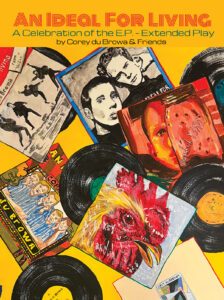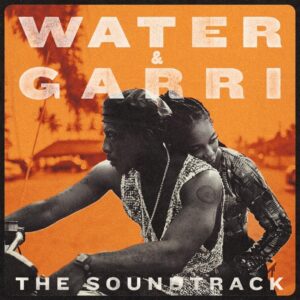The Incredibly abbreviated history of Punch
In the beginning, God gave man beer – and it was good. Well actually, it took a while. And the beer was horrible. The first known use of a straw as a tool was by the Sumerians in 3,000 BCE, and used it to get down through the semi-solids to the liquid in a container of fermented grain beer – likely more of a blended loaf of bread with some mildly alcoholic liquid in a glass. It would take another 4,500 years for the first ‘civilized’ mixed drink, Punch, to appear – around the early 1600s – off the coast of India. During the next 100 years, the Royal British Navy carried the ‘flowing bowl’ across the globe, becoming the most popular drink in the world. By the mid-1800s, it was pretty much extinct – replaced by the cocktail. Author David Wondrich wrote an entire book on the short and amazing history of Punch. I’ll see if I can hit the highlights in a couple hundred words.

The word punch – many, but not everyone believes – is based on the Hindi word पाँच (pāñć), meaning “five”. This is from the five main ingredients; spirit, sugar, juice, water, and spice, that went into the drink. In 1588 the British defeated the “invincible Armada” of Spain, and became the single naval superpower in the world, and their presence spread quickly across the globe. Brits set up outposts along the western coast of India where citrus and spices, luxuries in London, were plentiful. And they were introduced to a new (to the Europeans) type of distilled spirit, Arrack, which some believe had been present in the Indian subcontinent since 800 BC. The distilled palm wine and fermented sugar cane predates fermentation in Europe by centuries, and the sugar cane based spirit is loosely related to rum later created in the Caribbean. The spirit tastes very similar to traditional Jamaican dark rum, or Rhum Agricole, and has a distinctive ‘funk’ or ‘hogo’ essence. What is hogo? The term is of French origins, deriving from ‘haut gout’ – referring to slightly tainted game meat – that many find strong, but desirable. Arrack is a difficult spirit to drink on its own, but combine it with citrus and spices, and it brings out underlying flavors that can balance a punch. And of course, will get you drunk and leave you with a monster headache the next morning. It didn’t take long for the sailors to bring everything with them back to Great Britain – and to the shores of the new Colonies.
In 1600, the newly created East India Trading Company set out for Sumatra, Java, and India, landing on the western shores of India in 1608. Seven years later there were English trading outposts – called ‘factories’ dotted along the coast. In 1632, a letter was sent from Armagon to Pettapoli, both established British factories, that mentions punch for the first time, and by 1638 German adventurer Johan Albert de Mandelslo arrives in the region and gives us the first definition; aqua vitae, rose-water, juice of citrons, and sugar. The sailors, no stranger to the problem of transporting drinkable liquid on the high seas, carried it from port to port across the globe. Punch also had the added benefit of supplying the crew with Vitamin C to protect them from scurvy. They didn’t know what vitamin C was, or exactly how it was beneficial, but at a time when half of a vessel’s crew could die from scurvy on long voyages at sea – this was a real benefit.
But the world is not made of sailors, and the British are a stubborn lot, so it took some time for the communal bowl of punch to catch on. The aristocracy could afford good wine, brandy, and cognac, while the working class made do with ale. And not great ale at that. Added to that, it was expensive and strange. Around that time coffee and tea houses started sprouting up across England (another gift from the sailors on their eastern exploration). This took time as well, with churches and even the Pope railing against the “bitter invention of Satan”. Nevertheless, the coffee houses became hugely popular.

People like to get their drink on, and coffee houses had a much easier time getting a license to serve spirits than a tavern, and the large bowl of punch became a fixture of the coffee house (later called punch houses) – who’s numbers swelled to over 300 in London by the middle of the 1600s. These establishments, full of overly caffeinated men, became hotbeds for political and social discussion. Punch was a natural addition. Not only was a bowl of punch consumed in a community over time, allowing for and encouraging discussion, but it also counteracted the effects of caffeine on the drinker.
In the very late hours of the 1600s, the British Parliament passed a series of measures meant to hurt the French wine and cognac trade, and passed a law allowing individuals to distill gin within their own establishments, kicking off the English Gin Craze in the first half of the 1700s. By1730 the cost of a pint of gin cost less than a pint of ale, and people realized you could make punch out of gin, disguising the awful taste of the moonshine. At the same time, the Colonists were doing the same thing with the cheap and poorly made rum from the British Colonies. And Punch was off!

The coffee houses and their regular patrons eventually evolved into clubs, meeting regularly and discussing, arguing, and sometimes plotting around the large bowl. Many clubs had elaborate bowls and cups made, which became central to the gatherings. It was the perfect drink for the time. People had a great deal of time on their hands, and the punchbowl was intended to be communal. Made of clay, wood, porcelain, or sterling silver, the bowls were accompanied by the simple ladle, often wood or whalebone, and a collection of small 2 to 3oz cups – or in smaller bowls, passed from one to each other as a common cup. You could not venture too far from the bowl, since the cups were so small, and this encouraged interaction by those drinking from it. It could be served cold (it was a century into the future before ice could be readily available year-round) or hot, and the typical bowl was one, two, or three quarts, but often larger groups would use a one to five gallon bowl. The largest referenced bowl of punch was actually a marble fountain, filled by Admiral Edward Russell as he hosted a grand party in 1694. The ‘bowl’ was so massive that a ship-boy rowed around the fountain, filling cups as he circled the perimeter.

It was expected that once you sat for a bowl, you were in for the duration. This was one of the main attractions – the communal drinking and fellowship with your peers. It is also what doomed it. On April 23, 1803, the word cocktail entered the written language in ‘The Farmer’s Cabinet’, printed in Amhurst. New Hampshire. It was the opposite of the communal bowl. A cocktail was a single serving drink made to order, consumed quickly, then the drinker could return to (or go to) work. America was a large and vast land, and the upstarts had no time to spend all afternoon or evening drinking the same thing. There was land to explore and factories to staff.

By the last half of the 1800s, punch became a relic. Bars and saloons still had a bowl and cups, but they were primarily decoration. Other than private social clubs, regiments, or groups of older gentlemen celebrating anniversaries – punch was effectively dead. Even so, one of the most iconic punch bowls is still with us. On May 5th, 1893, the Dominion Hockey Challenge Cup was presented to the Montreal AAA club, a gift of Lord Stanley of Preston, awarded to the year’s top Canadian hockey team. The Dominion Hockey Challenge Cup is now known as the Stanley Cup.
In the last two decades, grabbing the coattails of the cocktail renaissance, punch has been experiencing a bit of a comeback. There is a wonderful social aspect to it that you just don’t get from a bar or even a cocktail party. You are standing outside on a beautiful summer afternoon – and you pretty much have to start up a conversation with the person next to you. I fear, though, that COVID may have finally put the practice to rest. I’m not sure when we will want to gather closely around a bowl, drinking from something that we have all been dipping into. That seems to be the epitome of a super-spreader event.
I hope I am wrong. I really miss hanging out with people.
Happy New Year!
- Bill Stott
AotCB-023
Instagram@architecture_of_the_cocktail
Other RUMinations in Architecture of the Cocktail:
HAVE YOU EVER HAD A REAL DAIQUIRI? by Bill Stott
The Golden Age of Cocktails, by Bill Stott
Hogo! by Bill Stott
How about a nice Hawaiian punch? by Bill Stott
“What one rum can’t do, three rums can” by Bill Stott
Yo, ho, ho, and a Bottle of Rum, by Bill Stott
Yo, ho, ho, and a Bottle of Rum – Part II, by Bill Stott
Spirits Up! Black Tot Day, by Bill Stott



